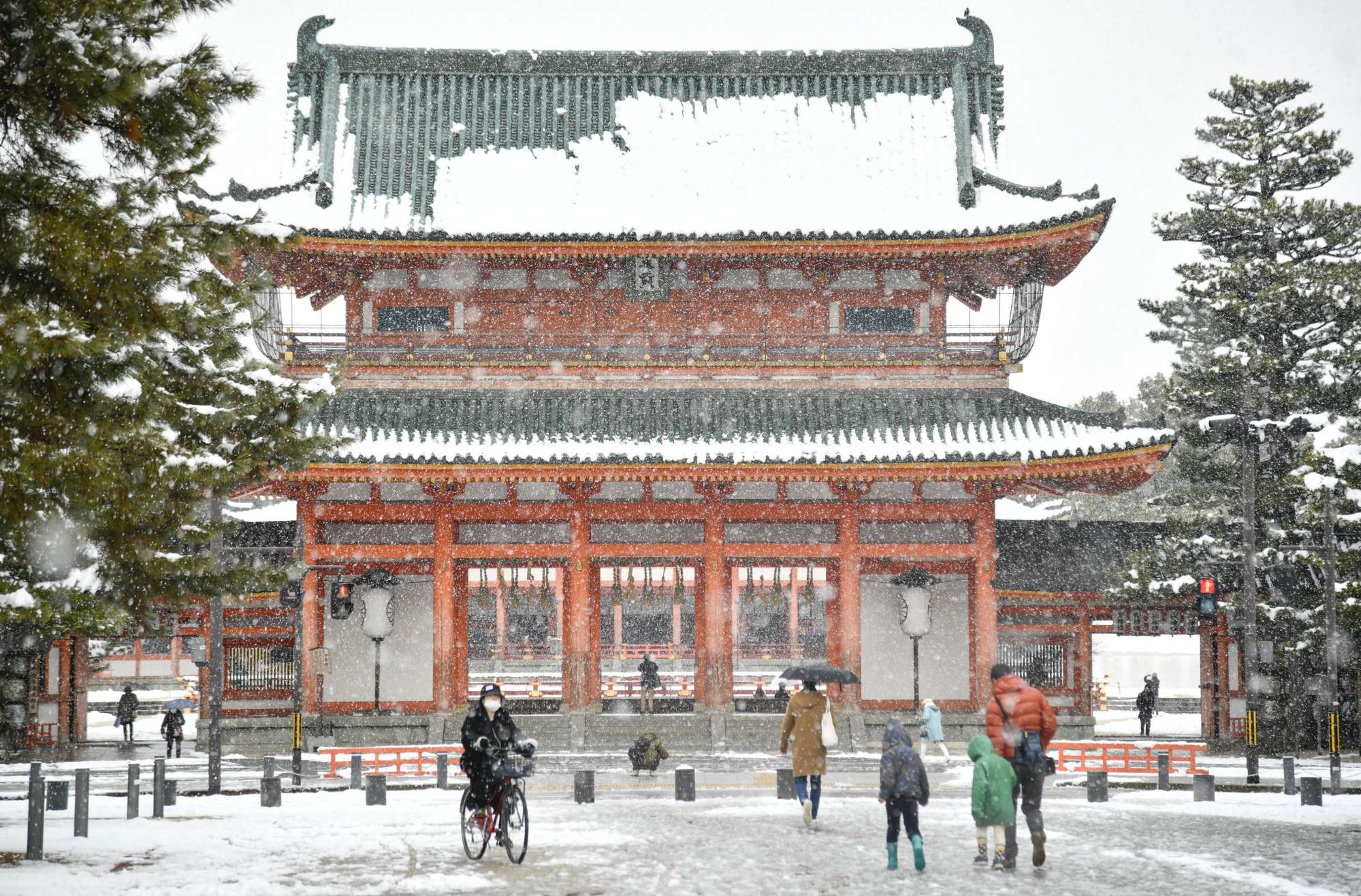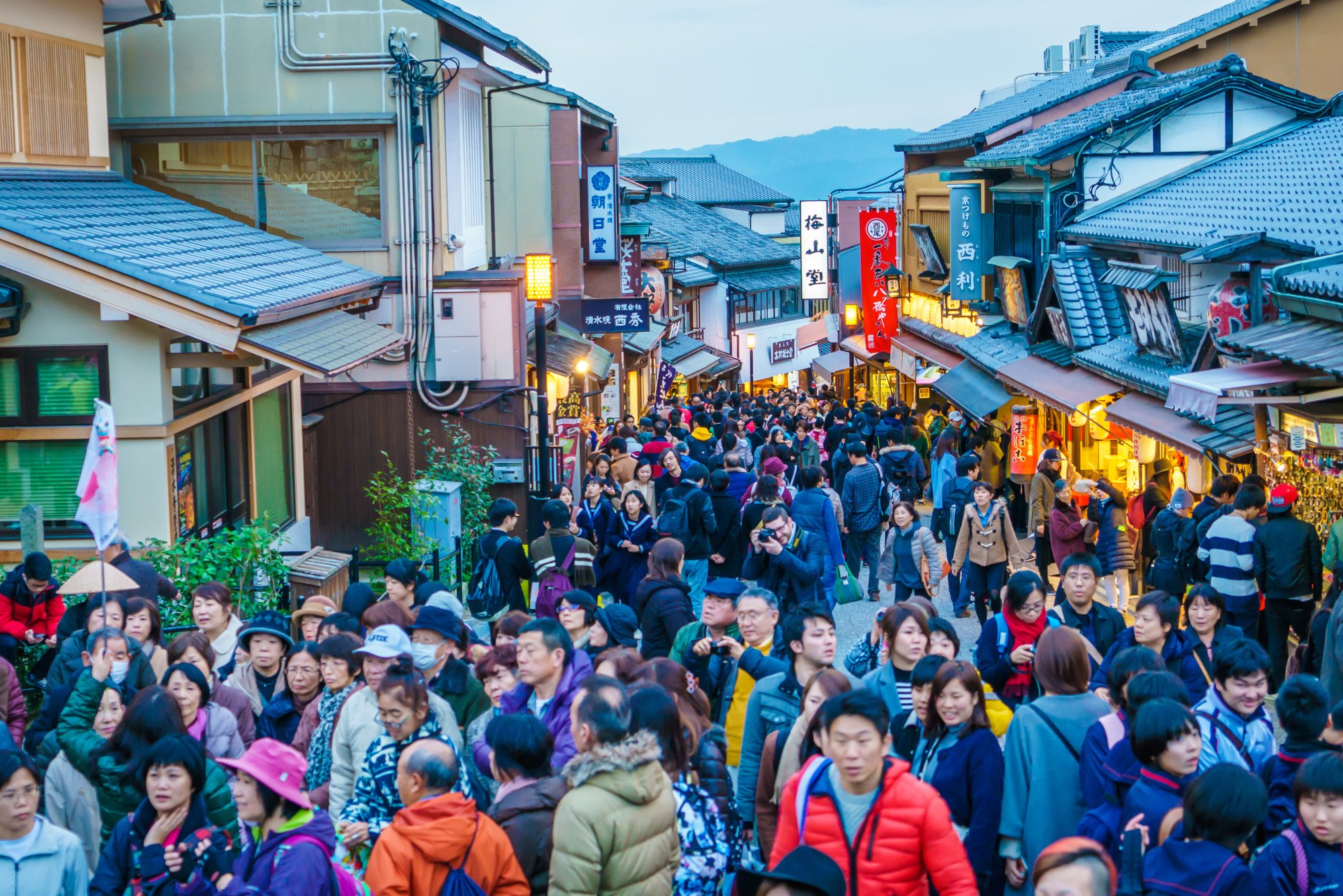
Will Kyoto go bankrupt? Japan’s ancient capital swims in debt as coronavirus keeps foreign tourists away
- The city of history and culture used to have millions of annual visitors, but is now struggling as two years’ lost tourism revenue adds to its mountain of debt
- Kyoto’s mayor plans to restore fiscal health by cutting costs and asking the city’s many temples, which are currently exempt from taxation, to contribute
Kyoto, the ancient Japanese capital that tourists flocked to in their millions pre-pandemic, is in danger of going broke as it struggles to offset billions of dollars in debt racked up through big-budget infrastructure projects with persistently low tax receipts and millions in lost tourism revenue.

This financial year, which ends on March 31 in Japan, it is estimated that the city will have haemorrhaged around 50 billion yen (US$433 million) – another huge net loss to add to its 860 billion yen (US$7.5 billion) mountain of accumulated debt.
Few argue that the absence of foreign tourists is the most immediate cause of Kyoto’s financial woes, but other factors are also at play – costly tax exemptions, wasteful government spending and loss-making rail infrastructure not least among them, according to critics.
Temple exemptions
Avi Lugasi, an Israeli who has lived in Kyoto for 27 years and operates the Windows to Japan travel agency, identified a long-standing tax break enjoyed by Kyoto’s many religious sites as a major reason for the parlous state of the city’s coffers.
“It’s true that much of the city’s economy revolves around tourism and that has increased in recent years as the national government set a target of 60 million foreign visitors by 2030, but there are other problems here,” he told This Week In Asia.
“One of the biggest reasons for the problems is all the temples and shrines throughout the city, which are one of the main reasons why people want to come here, but they do not pay tax to the city like regular businesses and they own vast amounts of land.”
Kyoto has in the past attempted to force religious sites to fork over at least a portion of the revenue they earn from tourists, but the effort led to a decade-long stand-off that continues to be a source of ill will between those who support the tax exemption, and those who insist it is only fair that the temples contribute to the city’s upkeep.
People are worried … it’s been so difficult without tourists and the pandemic has caused so much damage to the travel industry here
Wastefulness has also hurt Kyoto’s finances, according to Lugasi – pointing to lavish events the city’s government-run tourism association arranged for travel agencies and journalists both before and during the pandemic in a bid to attract more visitors, which he said all too often failed to hit the mark.
A substantial chunk of the city’s debt burden is linked to the underperforming Tozai Line, a subway that officially opened in 1997 but has never managed to attract the passenger numbers predicted – even more so since the advent of Covid-19.
“The plan was for the new Tozai Line to make it easier for more tourists to get around the city and to encourage people to stop using their cars and switch to public transport,” said Masaru Takayama, president of Kyoto-based Spirit of Japan Travel. “It was a good idea as the city needs to decarbonise and meet the government’s 2050 environment goals.”
Construction of the subway cost some 550 billion yen (US$4.8 billion) – more than double what was initially projected – and it has consistently struggled to cover its costs, with the city having to extend financial assistance totalling around 100 billion yen (US$872 million) over the years.
Japanese blast China’s closure of Little Kyoto as ‘racist’, ‘jealous’
Other factors hurting Kyoto’s finances include its generous provision of bus and rail passes that allow citizens aged 70 or older to travel for free, or at a heavily discounted rate; government-run childcare services that are among the best in the country; and a resident population that comprises nearly 10 per cent students, who pay little or no tax.
Regulations that limit the height of buildings in a bid to preserve the ancient capital’s scenic cityscape further cap Kyoto’s tax take, as buildings more than 31 metres high – or about 10 storeys – are banned in the city centre, preventing taller, and more profitable, office towers and apartment blocks from being built.
Balancing the books
In June, Mayor Kadokawa’s administration unveiled a plan to restructure the city’s finances and return it to fiscal health. Religious sites will be asked to make voluntary contributions to the city’s coffers, senior citizens’ benefits will be pared back – including raising the age for free travel passes to 75 from 70 – and a new tax will be rolled out for property owners whose primary place of residence is not Kyoto.
Some 500 municipal employees are also set to lose their jobs over the next five years under Kadokawa’s plan – causing consternation among those working for the city as salaries are also slashed.
Only time will tell if such cost-cutting measures will be enough to right the ship as Kyoto mourns the loss of the legions of tourists who as late as 2018 were being blamed for crowding buses, pestering geisha, littering and other misbehaviour – even as they poured billions of dollars into the national economy through tourism revenue.

But in the meantime, “people are worried”, said a city employee with knowledge of the city’s tourism sector who asked not to be named.
“It has been so difficult without tourists and the pandemic has caused so much damage to the travel industry here, but we are all working very hard still,” she said.
“We are coming up with new projects and plans to help the city, but I work for the city and they have said that jobs will have to go. I just hope things improve again soon.”
As Covid-19 keeps Chinese tourists at bay, Kyoto sees silver lining
New York City went bust in 1975, after being denied a government bailout following decades of mismanagement. Rules were tightened in the wake of the city being put into receivership, with city hall prevented from taking on the same untenable levels of debt.
Many US cities now have limits on the amount they can borrow. In San Francisco, for example, borrowing is capped at 3 per cent of the city’s total property value – or about US$9 billion as of last year.

